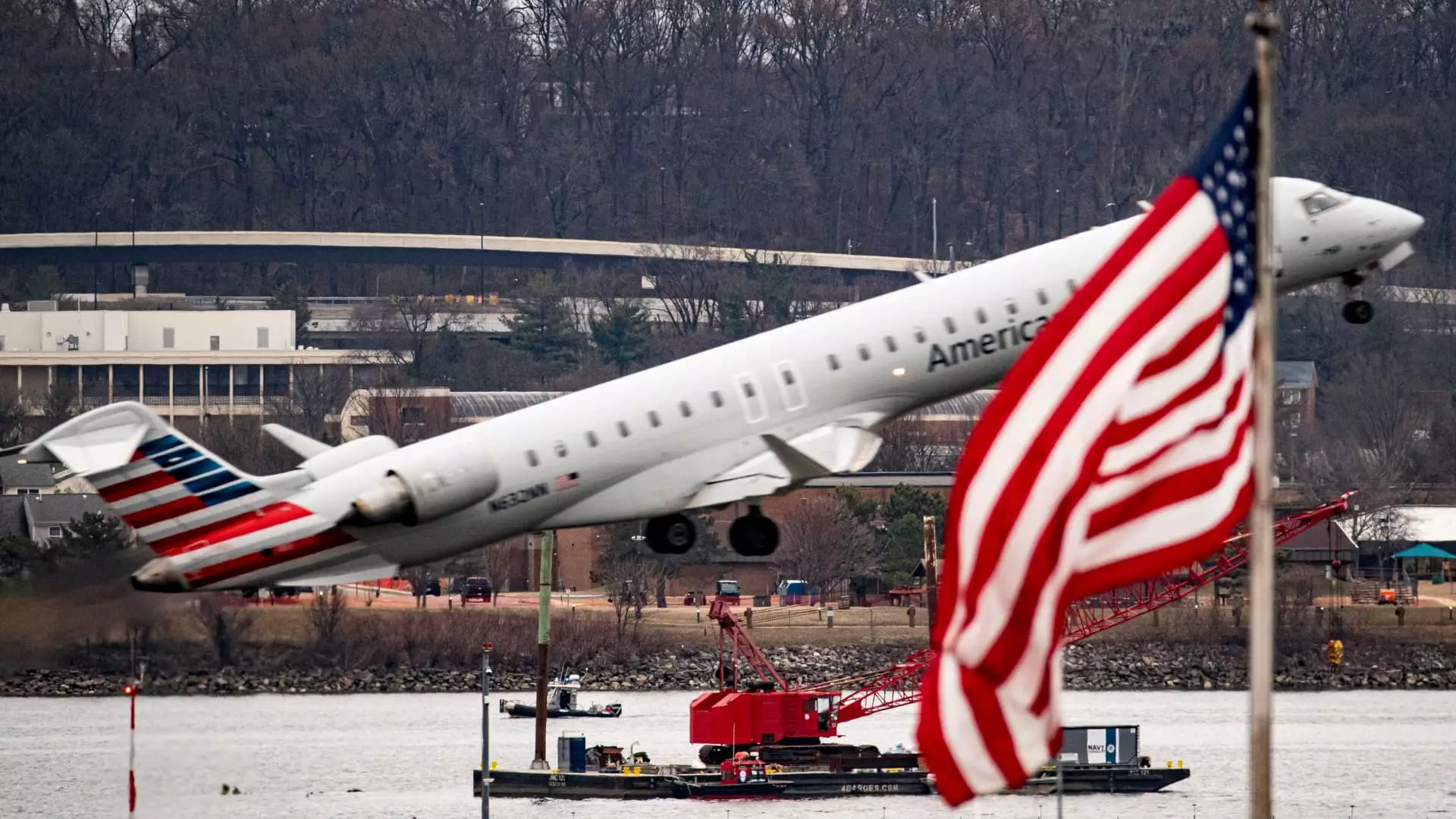The recent tragic collision between an Army Black Hawk helicopter and an American Airlines regional jetliner has once again spotlighted the pressing need for a comprehensive overhaul of the United States airspace management. This catastrophic incident, resulting in the loss of 67 lives, including all passengers on the commercial flight and the military crew, underscores critical deficiencies in a system that merges military and civilian air traffic. The conversation between U.S. Transportation Secretary Sean Duffy and Elon Musk, a leading figure in aerospace innovation, indicates potential pathways to reform — yet, there are substantial complexities to navigate.
Elon Musk’s Technological Insight
Duffy has publicly acknowledged Musk as a visionary thinker, tasked with leading initiatives like the Department of Government Efficiency. This collaboration represents an important intersection of technology and transportation policy, raising hopes that Musk’s innovative perspectives could rejuvenate outdated protocols. With initiatives focused on utilizing cutting-edge technologies, the involvement of Musk suggests there may be an opportunity to improve the efficiency and safety of airspace management.
However, one must approach this optimism with caution. While Musk brings a wealth of technical expertise, effective airspace reform demands collaboration across various sectors, including military regulations, civilian air traffic control, and broader infrastructural capabilities. Significant reliance solely on the methodologies propagated by companies such as SpaceX could overlook critical safety protocols or regulatory frameworks that are vital in this context.
The incident is alarming not only because of its deadly consequences but also due to the structural implications regarding air traffic control procedures. Duffy hinted at critical procedural flaws; notably, the fact that a single air traffic controller managed both helicopter and airplane traffic during a time of heightened risk. This revelation raises serious questions about the adequacy of current staffing and operational policies within control towers.
The ensuing investigation by the National Transportation Safety Board is crucial, as understanding the chain of failures will be central to instituting meaningful reforms. If procedures in the control tower are outdated or inadequately resourced, the broader environment of airspace safety becomes vulnerable. This incident serves as a wake-up call to re-evaluate and modernize not just technologies but the entire framework of airspace management.
Another notable point in Duffy’s comments pertains to military operations in densely populated airspace. His stark admonition that „generals who are flying in helicopters for convenience“ should reconsider their choice of transport reflects a growing tension between military needs and civilian safety. The crux of the argument is the need for military operations to adapt to modern air traffic frameworks rather than impose on them freely.
This creates a unique dilemma: balancing the utility of military assets and the safety of civilian air travel. If helicopter training missions are conducted at night or in busy airspace, this could lead to additional risks like those demonstrated in the recent crash. The need for logistical adjustments is paramount — changes must be data-driven and informed by thorough investigations rather than merely reactionary.
The Call for Modernization
The backdrop of this launch for reform is a long-standing call from U.S. airline executives for more substantial funding to modernize air traffic control systems. This highlights a systemic issue; the legacy systems in place can no longer effectively manage the demands of modern air travel, especially in areas where military and commercial interests converge.
Duffy’s commitment to evaluating current policies indicates that there might be a forthcoming shift towards a more robust staffing model within air traffic facilities, but tangible changes will necessitate coordinated efforts at multiple government levels and with military branches. This cross-disciplinary approach is essential to aligning interest in safety and efficiency.
Although the tragedy of last week serves as a catalyst for change, the road to reforming U.S. airspace management will require perseverance. By leveraging innovative ideas from industry leaders like Elon Musk, scrutinizing the efficacy of current operational procedures, and conducting a comprehensive review of the military’s role in airspace usage, a foundation can be laid for improved air safety.
Ultimately, the goal must focus on not just immediate fixes but on sustainable, long-term enhancements to create an air traffic system that is robust, responsive, and, above all, safe for all users. In doing so, we pay respect to the lives lost and reaffirm our commitment to public safety in an increasingly complex aerospace environment.


Napsat komentář